iPhone Bluetooth Protocols Explained
You are probably using Bluetooth on your iPhone every day, but do you really know how it works? In this article, I will go deep through explanations about the Bluetooth protocols on iPhones.
On iPhones, and on most modern devices, a Bluetooth connection is going through several steps before the two devices can share datas:
- Device Discovery
- Connection Establishment
- Pairing
- Authentication
- Encryption
- Logical Link Control and Adaptation Protocol (L2CAP)
- Service Discovery
- Channel Establishment
- Data Transfer
- Connection Management
- Disconnection
I’ll explain each step with more explanations below in the article. But first, let’s speak about some Bluetooth history to better understand when does it comes from, and why some technical choices have to be made.
The Evolution of Bluetooth and Its Integration in the iPhone Ecosystem
Bluetooth technology, a name inspired by the 10th-century king Harald Bluetooth who unified Denmark and Norway, symbolizes the unification of communication protocols into one universal standard. I’ll go through the rich history of Bluetooth technology and its pivotal integration into the iPhone, changing the way we interact with devices.
The Origins of Bluetooth
Bluetooth technology's journey began in 1994 when Ericsson, a Swedish telecom company, initiated a project aiming to develop a wireless alternative to RS-232 data cables. By 1998, the Bluetooth Special Interest Group (SIG) was formed, with Ericsson, Intel, Nokia, Toshiba, and IBM as its founding members, leading to the release of the first Bluetooth specification, version 1.0, in 1999. This marked the beginning of Bluetooth as a global standard for short-range wireless communication.
Advancements and Adoption
Bluetooth technology rapidly evolved with successive versions enhancing speed, range, security, and energy efficiency. With version 1.2, introduced in 2003, came notable improvements in connection stability and faster device discovery. Version 2.0, launched in 2004, introduced Enhanced Data Rate (EDR), boosting bandwidth. Version 4.0, unveiled in 2010, was a game-changer with Bluetooth Low Energy (BLE), making it suitable for devices requiring low power consumption.
Bluetooth Meets the iPhone
In 2007, Apple's first iPhone incorporated Bluetooth 2.0, allowing users to connect to earpieces and computers. This was just the beginning of what would become a deeply integrated ecosystem. Each iPhone iteration embraced the latest Bluetooth advancements, improving connectivity and expanding the ecosystem with new capabilities. With the introduction of Bluetooth 4.0 in the iPhone 4S, Apple paved the way for a new era of smart devices and the Internet of Things (IoT).
The Apple Ecosystem and Bluetooth
Bluetooth's significance in the iPhone ecosystem became undeniable as Apple introduced its own suite of Bluetooth-enabled devices, including AirPods, Apple Watch, and various peripherals. The seamless connectivity and synchronization across these devices exemplify Bluetooth's integration, aligning perfectly with Apple's ethos of creating intuitive user experiences.
From its inception as a simple wireless alternative to data cables to becoming the backbone of the wireless communication ecosystem, Bluetooth's history is a testament to technological advancement. In the iPhone, Bluetooth found a platform where it could thrive, providing users with a level of connectivity that was once the realm of science fiction. As we continue to look towards the future, the bond between Bluetooth and iPhone promises to bring forth even more innovative and transformative wireless experiences.
How your iPhone uses Bluetooth with other devices
The world of wireless connections is dominated by Bluetooth technology, with iPhones being at the forefront of utilizing this innovation for seamless communication with a plethora of devices. Understanding the technicality behind Bluetooth connections on your iPhone not only enhances user experience but also amplifies the device’s functionality. This deep dive into the Bluetooth protocols used by your iPhone will elucidate the sophistication of wireless connections.
1. Device Discovery
At the heart of Bluetooth connectivity is the process of device discovery. Your iPhone uses an inquiry phase to broadcast its presence across 32 frequencies. In turn, devices in discovery mode reply with vital information. This stage is crucial for recognizing and listing potential devices for connection.
2. Connection Establishment
Post-discovery, your iPhone selects a device, such as a Bluetooth backup camera, to establish a connection with, using a process known as 'paging.' It involves a delicate exchange where devices synchronize, setting the stage for a stable Bluetooth connection.
3. Pairing
Pairing is akin to a digital handshake between devices. Your iPhone sends a pairing request, to which the receiving device responds. This exchange ensures both devices are on the same page regarding how they'll communicate and secure their connection. It can happen seamlessly with some Bluetooth devices such as remote shutters.
4. Authentication
Authentication is a legacy step, primarily involving a PIN exchange for creating a unique link key. With the advent of Secure Simple Pairing, this process has evolved, providing a more secure and streamlined connection setup.
5. Encryption (Optional)
For an added layer of security, your iPhone can initiate an encrypted connection with another device, ensuring that the shared data remains confidential and protected from potential eavesdropping.
6. Logical Link Control and Adaptation Protocol (L2CAP)
L2CAP is the unsung hero, managing the multiplexing of data over the established connection, ensuring that your iPhone can handle multiple types of data streams with efficiency and reliability.
7. Service Discovery
Service Discovery Protocol (SDP) is like a directory assistance for Bluetooth services, allowing your iPhone to understand what services another device offers and how to connect to them effectively.
8. Channel Establishment
After discovering available services, your iPhone and the connected device must agree on a set of protocols and profiles to use. This ensures they speak the same language, whether it's for streaming audio or handling calls.
9. Data Transfer
With a channel established, your iPhone can begin the transfer of data. This stage is where the robustness of Bluetooth technology shines, ensuring data integrity through acknowledgments and retransmissions if necessary.
10. Connection Management
Bluetooth is not just about making a connection but also managing it intelligently. Your iPhone constantly adjusts frequencies and power levels, utilizing different modes to save energy without compromising the connection quality.
11. Disconnection
Eventually, when it's time to disconnect, the process is handled with care, ensuring all data transfers are complete and the connection is closed cleanly, freeing up the channel.
Conclusion
Bluetooth technology on the iPhone is a marvel of modern wireless communication, embodying complexity and sophistication. This exploration of the various stages of Bluetooth connectivity, from device discovery to disconnection, reveals the workings behind the scenes, ensuring users enjoy a smooth and secure wireless experience. Understanding these protocols allows us to appreciate the technological dance that occurs each time we connect our iPhones to any Bluetooth device in our lives.

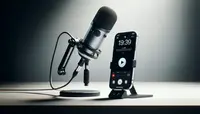
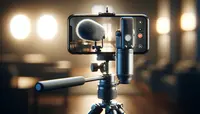
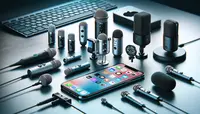

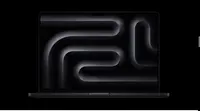

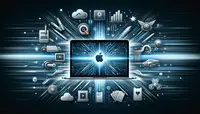
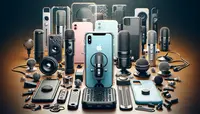

Post your comment